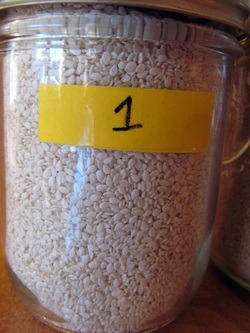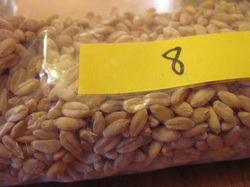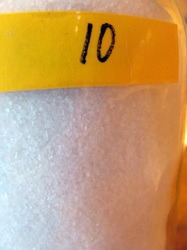Roman Trade and Commerce
Grains of the Roman World ~
Latin class extension
I realize that not all of the grains and substances you will see below were necessarily used in the Roman Empire. However, most of them, or similar products, were.
Our cultural focus this week in the Latin classes that I teach was on trade and commerce during the height of the Roman Empire. While preparing for the class ahead of time, I learned that one of the keys to Rome's success was in managing the storage, pricing, shipment, and growth of grains throughout the empire.
If one particular region of the Roman Empire didn't have the best of growing conditions for grains, then the grains would be shipped in from regions which had better farmland. After all, soldiers and government officials must still be fed, correct?
Often, grains would be shipped hundreds, if not thousands, of miles depending on where the needs were greatest. In order to stave off riots of the lower class, the Roman Empire provided free grain rations to the poorest in society, thus making certain that even the poorest would have the most humble and basic of foods for themselves.
The harvest, storage, and shipment of grains was a huge responsibility. I began to gain a sense of why Joseph in the Old Testament had such a huge responsibility when the Jews came to live in Egypt during the long drought. No wonder he was named the #2 man in the kingdom!
In order to make this lesson a bit more "hands on", I got out 10 containers of grains and basic ingredients from my pantry to display. I hid their true names and numbered them #1 - #10.
I displayed them in one line on a table, along with a sign that indicated the 10 ingredients at which they were looking, although the list was not in order.
Here is the list of ingredients. See if you can match the correct ingredient with its jar in the photo. Some of them are easier than others!
Our cultural focus this week in the Latin classes that I teach was on trade and commerce during the height of the Roman Empire. While preparing for the class ahead of time, I learned that one of the keys to Rome's success was in managing the storage, pricing, shipment, and growth of grains throughout the empire.
If one particular region of the Roman Empire didn't have the best of growing conditions for grains, then the grains would be shipped in from regions which had better farmland. After all, soldiers and government officials must still be fed, correct?
Often, grains would be shipped hundreds, if not thousands, of miles depending on where the needs were greatest. In order to stave off riots of the lower class, the Roman Empire provided free grain rations to the poorest in society, thus making certain that even the poorest would have the most humble and basic of foods for themselves.
The harvest, storage, and shipment of grains was a huge responsibility. I began to gain a sense of why Joseph in the Old Testament had such a huge responsibility when the Jews came to live in Egypt during the long drought. No wonder he was named the #2 man in the kingdom!
In order to make this lesson a bit more "hands on", I got out 10 containers of grains and basic ingredients from my pantry to display. I hid their true names and numbered them #1 - #10.
I displayed them in one line on a table, along with a sign that indicated the 10 ingredients at which they were looking, although the list was not in order.
Here is the list of ingredients. See if you can match the correct ingredient with its jar in the photo. Some of them are easier than others!
- sea salt
- alfalfa seeds
- couscous
- wheat
- cardemom pods
- quinoa
- oats
- flax seed
- barley
- sesame seeds
Answers are below.
Hold your mouse or cursor over the small jars for the answers:
How many of these did you guess correctly?
Some of my students thought that this would be very easy, but no one guessed them all correctly, and most of them missed more than a few!
I know we don't often think like this, but did you realize that your pantry (and mine) is filled with so many varieties of foods that we eat as well as the top upper class Romans did at the peak of the Roman Empire. We can easily have seafood, beef, pork, chicken, and all sorts of fruits and vegetables in the same week, compared to the middle class in the Roman Empire who still had their basics of bread and grains each day.
A similar activity can be done in your home or your classroom to show the merchant trade of spices. Simply wrap the bottles of spices in your home, and provide an opportunity for students to not only look at the variety of spices, but also smell the spices, and then attempt to choose the correct names for each bottle. (This also works well for Columbus Day or studies of Christopher Columbus. Fun!
Some of my students thought that this would be very easy, but no one guessed them all correctly, and most of them missed more than a few!
I know we don't often think like this, but did you realize that your pantry (and mine) is filled with so many varieties of foods that we eat as well as the top upper class Romans did at the peak of the Roman Empire. We can easily have seafood, beef, pork, chicken, and all sorts of fruits and vegetables in the same week, compared to the middle class in the Roman Empire who still had their basics of bread and grains each day.
A similar activity can be done in your home or your classroom to show the merchant trade of spices. Simply wrap the bottles of spices in your home, and provide an opportunity for students to not only look at the variety of spices, but also smell the spices, and then attempt to choose the correct names for each bottle. (This also works well for Columbus Day or studies of Christopher Columbus. Fun!
























